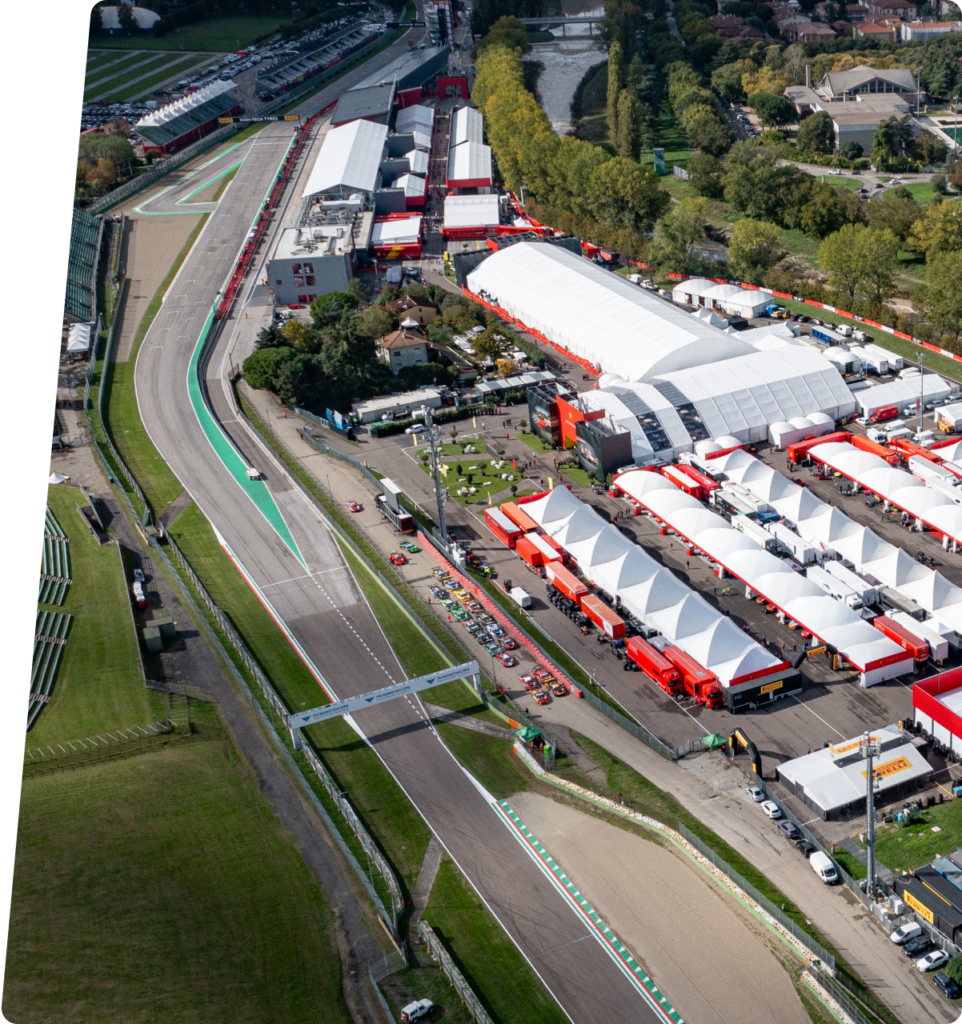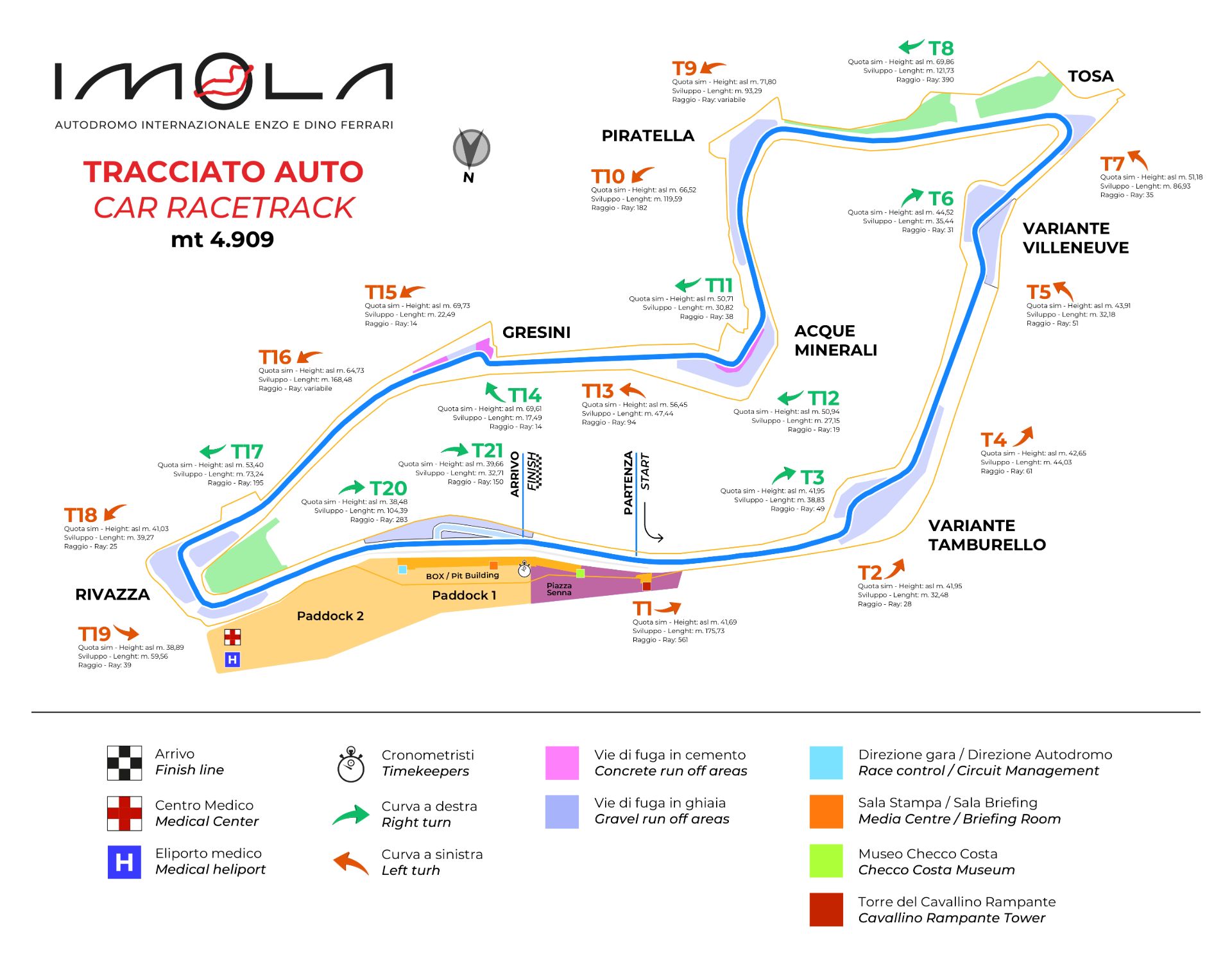Imola circuit track
The Autodromo Internazionale Enzo and Dino Ferrari is universally recognized as a very technical track, difficult to interpret, with rather complex turns and braking: driving it at a high pace requires a professional-level profile.
The circuit and its annexed structures were the subject of a redevelopment and modernisation plan that began in November 2006 and ended in September 2007, supervised by the well-known German architect Hermann Tilke, who specialises in the construction of motor racing circuits.
In the summer of 2009, the New Low Variant was built, necessary to meet the homologation requirements of the International Motorcycle Federation. This intervention, aimed at neutralizing the slight right turn characteristic of the track for cars, is located in front of the pit lane. In August 2011, the circuit underwent resurfacing work on the road surface, an operation that covered 70% of the track.

Car track

An exceptional witness, Enzo Ferrari, wrote a book in 1980 that talks about the beginnings of the Autodromo di Imola.
‘My first contact with Imola dates back to the spring of 1948. I assessed from the very first moment that that hilly environment could one day become a small Nurburgring because of the natural difficulties that the road strip being built would encompass, offering a truly selective route for men and cars. From this opinion the promoters of Imola felt comforted. In May 1950 construction began. I was present at the ceremony of the foundation stone, which was laid by the lawyer Onesti with the greeting of CONI and a contribution of 40 million, which I believe was the first gesture of the organisation towards motor racing. A small Nurburgring,’ I repeated to myself that day as I looked around, ’a small Nurburgring, with equal technical and spectacular resources and an ideal track length. This conviction of mine has been realised through the decades that have passed since then.’
Motorbike track
Lorem ipsum dolor sit amet, consectetur adipiscing elit. Ut elit tellus, luctus nec ullamcorper mattis, pulvinar dapibus leo.






